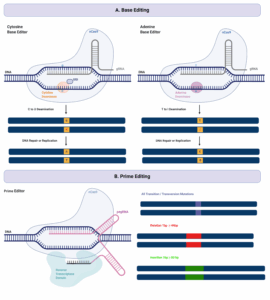
When food shopping, I tend to opt for organic products. These often have an extra label touting their GMO-free status, since organic farming prohibits the use of genetically modified organisms. That includes organisms created with “new genomic techniques” (NGTs) like CRISPR. But there’s a paradox: plants bred using conventional mutagenesis (i.e., random mutagenesis with chemicals and radiation) are generally allowed in organic farming, even though these techniques are more likely than modern gene editing to produce unintended mutations in the final product.
NGTs allow for precise and targeted changes that could, in theory, occur naturally. The technology is moving fast; for example, base editing and prime editing (techniques derived from CRISPR technology) enable precise changes without cutting both strands of the DNA and come with even lower risk of unintended mutations. Both techniques have been in the news recently because of their therapeutic use: on May 15, we learned that base editing was used for the first personalized CRISPR therapy, while on May 19, it was announced that prime editing has been used to treat a person for the first time. Going back to plants, base and prime editing have been successfully applied in several important cereal crops (e.g., rice, wheat, maize) but not yet in sorghum. A recent preprint reported a high-efficiency genome editing toolkit for sorghum, paving the way for use of base and prime editing in this important crop. The authors conclude: “These advancements provide a streamlined approach to generating diverse genetic variation, facilitating crop improvement efforts that address food security challenges and contribute to carbon capture initiatives that are addressing climate change.”
This year, the EU is set to relax strict regulation of NGT plants (which are currently treated like GMO plants containing foreign DNA), marking a long-awaited and scientifically-supported shift in focus away from the breeding method and towards the characteristics of the final product. However, the paradox persists: NGT plants will still be excluded from organic farming, while those bred using conventional mutagenesis can stay.
High-frequency Wus2-integrated transformation toolkit enhances Cas9 editing efficiency and expands capability with SpRY in sorghum
In bioRxiv, 24 January 2025
From the groups of Jianqiang Shen and Peggy Lemaux in the Department of Plant and Microbial Biology, University of California, Berkeley.
Snippet by Katrina Woolcock
Image credit: Figure 1 from Kantor et al., International Journal of Molecular Sciences, 2020 (CC BY)